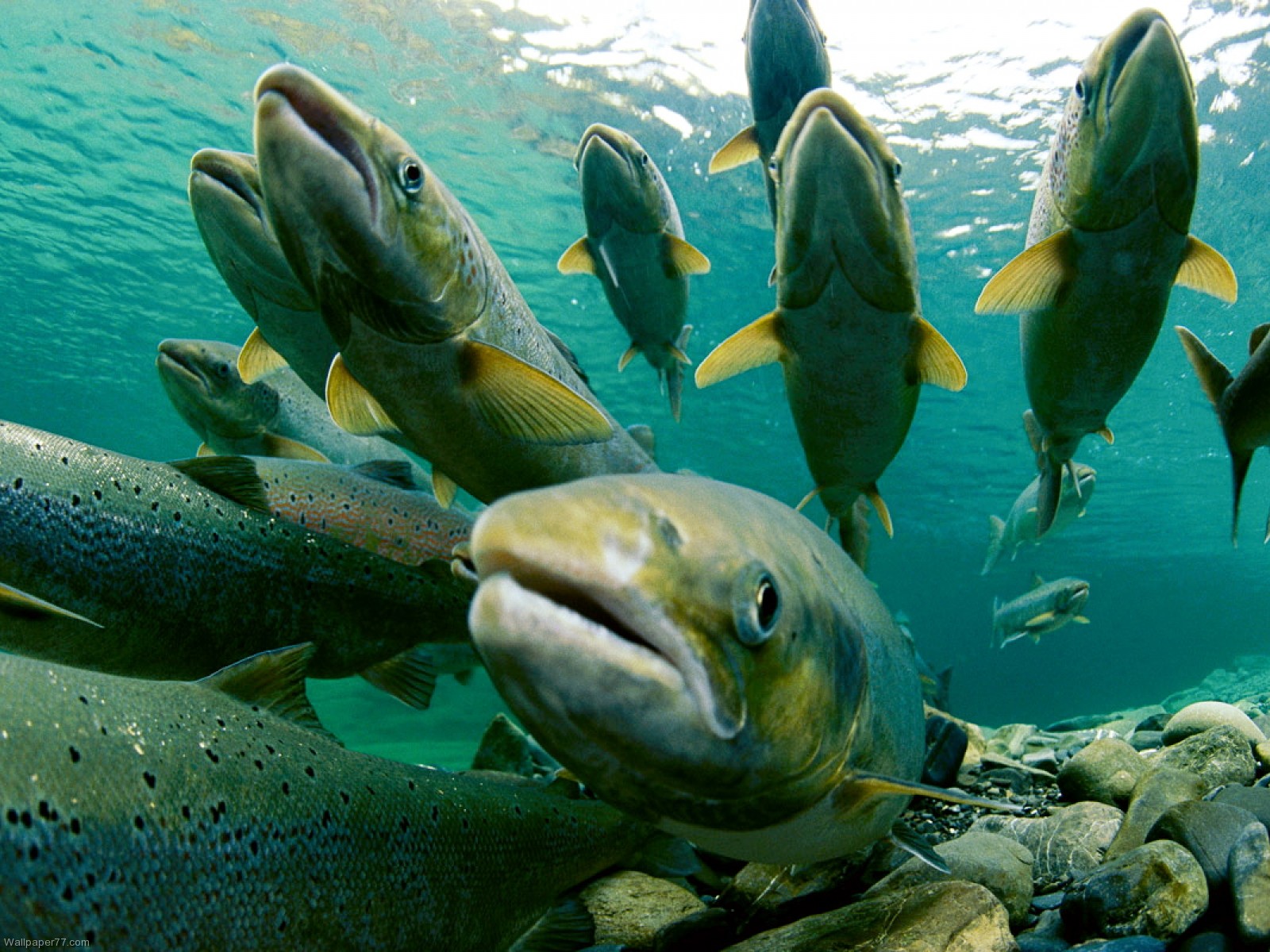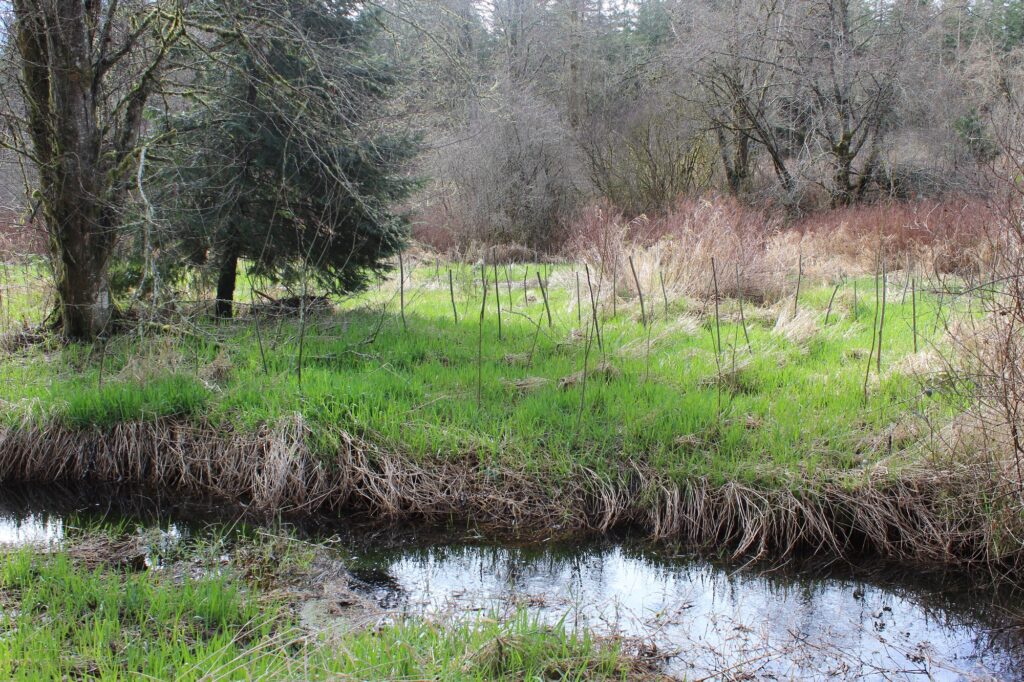Riparian Buffers
Imagine the cool protection of shade on a hot, sunny day
Imagine a hot summer day, standing in an area with no shade, with the blazing sun beating down overhead. Is your brow producing a bead of sweat just thinking about it?
Now imagine the feeling of entering a dark canopy of shade provided by tall trees. Can you imagine the change in temperature, the cooling effect, and a feeling of relief?
Like you, our salmon and other aquatic species are impacted by temperature. Cold water has higher levels of oxygen (called dissolved oxygen), which fish need in order to survive. Aquatic wildlife are at an increased risk of stress and disease if water temperatures are too warm, especially if there aren’t cool “refuge” areas where they can escape during warmer weather months.
Trees and shrubs along streams, rivers, and other waterways help provide shade and keep water cool enough for fish. These vegetated areas are called “riparian buffers.”

Fish aren’t the only ones who benefit from riparian buffers. Stabilizing banks and preventing erosion also helps protect the property of streamside and riverside landowners. There are other benefits, too:
Trees and shrubs absorb a large amount of rainfall and help with infiltration, which helps reduce flooding and standing water.
Planting natives reduces the spread of invasive species like Himalayan blackberry and Japanese knotweed.
Riparian buffers help keep water clean by filtering nutrients, sediments, pesticides, and other contaminants.
Riparian buffers can help prevent sediment and other flood debris from washing onto agricultural fields and other properties; the trees and shrubs trap the debris.
The natural beauty of riparian buffers can potentially increase property value.
Riparian buffers provide habitat for wildlife, including birds and pollinators that are critical for local farms.

Besides cooling water temperatures, riparian buffers also help support the organisms that fish eat. When leaves fall into the water, they become food for aquatic insects, and those insects become food for fish. In addition, the logs and branches that fall into the water provide pools and hiding areas for juvenile fish. But wait, there’s more! The root system of the trees and shrubs help hold streams and riverbanks in place, which prevents the erosion of sediment into the water. This is important for fish because sediment can clog gills, bury their eggs, and cloud the water, which makes it difficult for fish to see their prey.
When it comes to buffers, bigger is definitely better.
To be most effective at maintaining and reducing water temperatures, studies show that it’s best to have a buffer that’s at least 100-feet wide. With a larger buffer, the other benefits of the planting are also multiplied: greater large wood recruitment— which can create cooler places for fish and other aquatic species, food sources, and protection from predators, expanded habitat for other wildlife, greater bank stabilization, protection from flooding, and cooler air temperatures.
Stillaguamish Watershed Big Buffers
Many waterways in the Stillaguamish River watershed regularly reach water temperatures that aren’t healthy for salmon and other fish. To help solve this problem, Snohomish Conservation District—with funding from the Washington State Department of Ecology and the Washington State Salmon Recovery Funding Board—is working to plant 100-foot wide (or wider) buffers of native trees and shrubs along priority areas throughout the Stillaguamish River watershed.
Not only is Snohomish CD establishing riparian buffers in areas where water temperatures are too high, but they’re also working to prevent warming in the future by planting forest cover in high priority locations where the water temperatures are cooler.
These riparian buffer plantings include a mix of evergreen and deciduous native plant species. Many native deciduous plants grow faster than evergreen tree species, but are shorter lived. While evergreen trees are slower growing, they typically live longer. Douglas fir can live for about 1,000-1,500 years!

